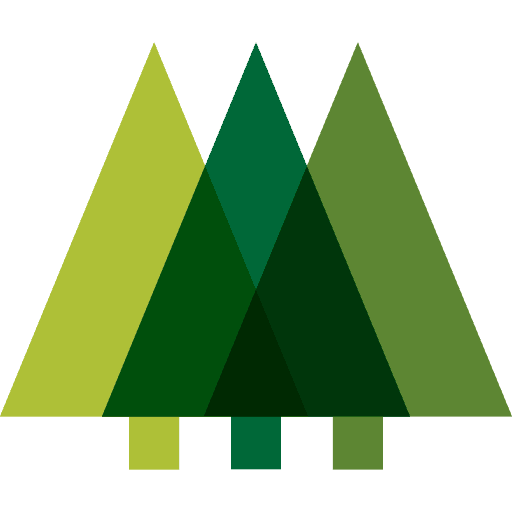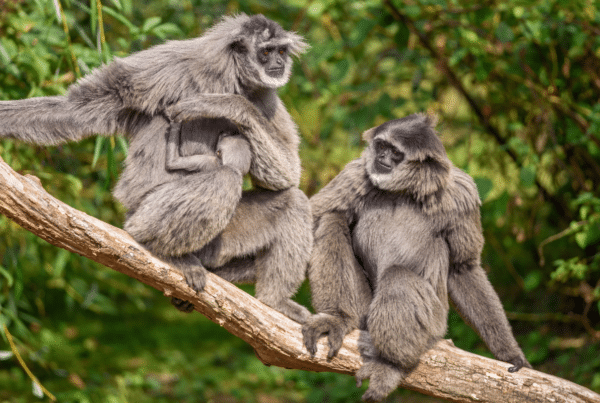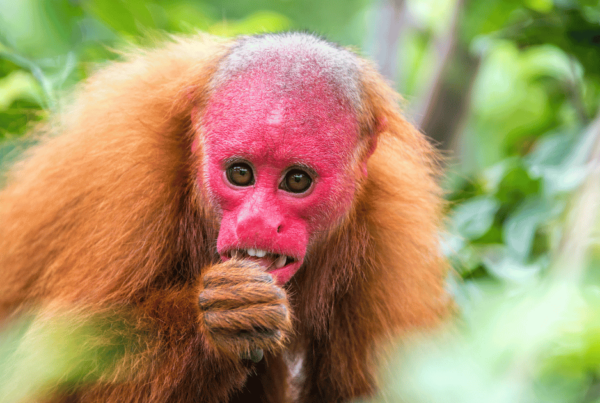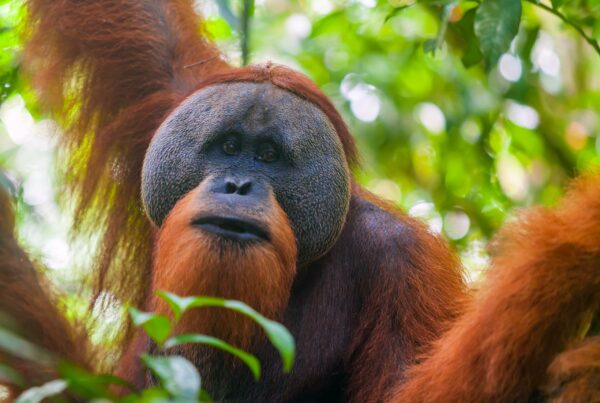Endangered species are facing extinction at an alarming rate. It’s estimated that there are currently around 12,000 different species of animals and plants that are endangered.
But why is it important that we know how to help them?
To answer that, let’s take a step back and think about a few special places around the world…
No one will see the dusty blue Spix’s Macaw take flight in Brazil’s forests ever again.
Nor the Formosan Clouded Leopard slink through the lowland forests of Taiwan.
Nor the striped Tasmanian Tiger prowling through the Australian mainland and the islands of Tasmania and New Guinea.
They are just a few of the hundreds that have been gone extinct in recent decades – and the thousands more that are on the brink of extinction today.
The world is going through a mass extinction. In fact, according to the International Union for Conservation of Nature, as of March 2019 there were 7,510 endangered or critically endangered animal species around the world.
Why are these wild animals going extinct?
Hunting and poaching. Not enough food or prey. And perhaps most importantly, loss of habitat from deforestation and forest degradation – largely inflicted by humans as we expand into the last wild places and intact forests on our planet. What’s more, climate change has also played its part: rising temperatures mean plants can no longer grow where they once could, so many creatures need new homes.
But what if we don’t do anything at all?
What would happen if we didn’t try to save them?
Well, firstly, we’d lose out on an incredible opportunity to learn about nature. We wouldn’t get to experience its beauty, wonder and mystery. Plus, we’d miss out on the chance to connect with other living things.
Secondly, we’d risk losing something much bigger than any single creature. The natural world provides us with everything we need to survive. It gives us clean air, water and soil; fresh produce and medicines; beautiful landscapes and wildlife; and even inspiration and hope. Without this precious ecosystem, life itself may not exist.
Okay, maybe that was a bit dramatic. But you get the idea. It’s not just about the animals; human-caused extinction of wild populations has implications for all of human society.
Why both habitats 🌳 and animals 🐾 are important
Conservation efforts can only go so far if animals have nowhere to live. Some species live in large areas of pristine forest. Others migrate through massive areas every year – think of the savannas of East Africa. And still others are always threatened by poaching and illegal hunting, which is only possible because of loss of critical habitat.
But you might also be wondering why it’s so important to save animals in the first place. Well, in exchange for food and shelter, animals themselves play a vital role in supporting forest ecosystems! Here are just a few examples:
- Trees depend on certain animal species for pollination and seed dispersal.
- Some species protect forests by eating herbivores and insects that might otherwise harm trees and plants.
- Others eat small branches and shrubs, thinning the understory and removing potential wildfire fuel.
- Animals eat, or are eaten by, other animal and plant species, both up and down the food chain. This helps to maintain ecosystem functions, keeping forests healthy.
And keeping forests healthy means keeping their climate change-fighting potential intact.
The bottom line? Forests need wildlife as much as wildlife needs forests. And wildlife conservation is as much a task for organizations like Stand For Trees as it is for people like you.
So here are six easy things you can do.
6 ways you can help save endangered species from extinction
Whether you do one or all of these things, every little bit counts.
1. Limit your consumption of factory-farmed meat and dairy, or non-sustainable palm oil. 🐄
Beef production – more specifically, converting forests to cropland or pasture – is the world’s leading driver of deforestation[1] – and habitat destruction. What’s worse, many of these areas are critical habitat, which means they’re the most important areas to the wild species. As you might expect, palm oil production in Southeast Asia is another major cause.
If you do eat beef, try to shop only for local, pasture-raised meats that aren’t fed grains or soy. And try to find RSPO-certified palm oil. Although RSPO isn’t perfect, it’s certainly better than nothing.
Remember that you don’t have to adopt a fully vegan lifestyle: any small change is better than none.
2. At home, plant native wildlife to attract pollinators 🐝
If you have a backyard, plant native flowers, trees, and bushes. These provide food and shelter for all sorts of wildlife, including insects like bees and butterflies (which can also help pollinate your plants – a win-win!) But be careful not to plant non-native plants (also known as exotic plants). These are often actually invasive species, which compete or even prey on native species for food and resources, increasing their risk of extinction.
If you don’t have a backyard, don’t despair! You could try some window or balcony plants, a window bird feeder, or something else small.
3. Buy sustainable products and shop with global conservation in mind. 🛍
The wood used in products like furniture and paper may come from threatened rainforests, so it’s important to check whether the products you buy are sourced sustainably. Similarly, the Congo Basin Rainforest (home to our Mai Ndombe project) is home to several endangered gorilla species – and is a key mining location for minerals used in electronics. The Grauer’s gorilla, for example, has suffered a 77% population decrease in the last two decades partly due to mining.[2] So by recycling your old electronics, you can help reduce the demand for destructive mining activity.
4. Help endangered species when you travel. ✈
By all means, see the world’s wonderful wildlife. Just be respectful and responsible as a tourist. You can take steps to support native wildlife by visiting a wildlife sanctuary to contribute to preservation efforts. You can also avoid buying souvenirs made with products like tortoise shell or ivory, as they might be traded on the black market.
Responsible wildlife tourism should support both the people and animals who live in those environments. So if you are traveling through a forest environment, consider supporting the communities that call that forest home – stay local, eat local, and buy local. Your money can ensure that people have the means to protect their natural treasures.
5. Don’t buy plastic products. 🌊
We’ve all heard of the Great Pacific Garbage Patch – the big pile of garbage floating in the North Pacific Ocean. But what about the Great Atlantic Garbage Patch? Yep – it’s a huge pile of trash that floats in the middle of the Atlantic Ocean, and it’s just as bad as the one in the Pacific.
Both of these are mostly plastic, and a menace to countless marine species like whales, turtles, dolphins, and fish. So if you can, avoid single-use plastics, and recycle what you do use. Not only do landfills take up a lot of space, but animals often mistake plastic for food, and waste like plastic bags and bottles often ends up in the sea. Use reusable bottles and containers, or compostable ones.
6. Support endangered species conservation organizations. (Psst! That’s us!) 🦁
If you can’t work on the front lines yourself, consider supporting organizations that do.
Stand For Trees projects protect native plants, birds, and animals by protecting their number one need: natural habitats. Every project also goes above and beyond to also protect the animals themselves – such as by running rescue centers, training rangers, or preventing illegal hunting. Here are just a few examples:
- Kasigau has a trained unit of wildlife rangers watching for and rescuing injured or endangered animals.
- Southern Cardamom has won awards for its ranger training model, which partners with local law enforcement to curb illegal wildlife hunting and trading.
- Rimba Raya, in addition to protecting critical orangutan habitat, also runs an orangutan rescue centre.
- Amazon Valparaiso runs a turtle breeding and hatching centre.
What’s more, all our projects have to show proof of their impacts.
So when people like you reduce their climate impact with us, you directly save forests and animals.
Every action you take to help endangered species is one step closer to the preservation of animal biodiversity, habitats, and the diverse ecosystems that keep our planet going. Stand For Trees is committed to making a difference, and you can too!
To check out the forests we save and support one, just click here.
[1] https://www.worldwildlife.org/magazine/articles/what-are-the-biggest-drivers-of-tropical-deforestation[2] https://news.mongabay.com/2019/01/cellphones-are-still-endangering-gorillas-but-recycling-old-ones-can-help/[/vc_column_text][/vc_column][/vc_row]









